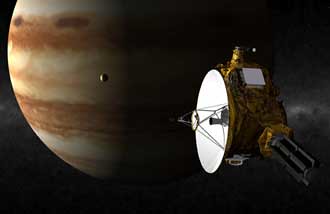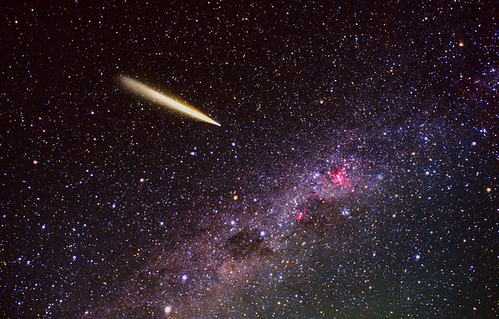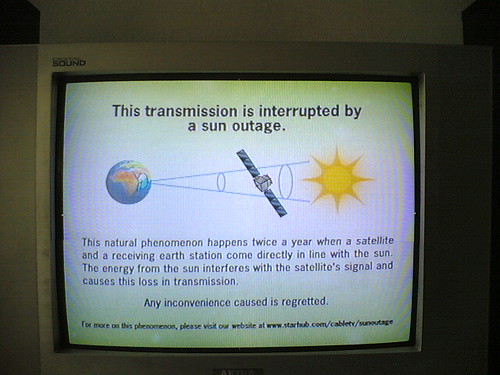FSS operators Seek Ways To Capitalize on Growth Patterns
The satellite industry finds itself in a strong position, top executives said at the SATELLITE 2007 opening session, but there was an undercurrent of caution in their comments.

Overall, the panel was increasingly optimistic about the growth prospects for the satellite industry. “I think we see an industry that is healthier every day,” said Intelsat CEO David McGlade.. We see economies improving around the world. It is a great time to be in the industry. In 2004, the industry was not as healthy as it was today. It is improving even in areas like Asia.”
There was also a sense of renewed optimism in traditional market segments such as broadcasting with new direct-to-home (DTH) operators springing up throughout the world as well the move to high definition (HD) which is increasing capacity demands.
“People are going back to basics,” said Giuliano Berretta, CEO of Eutelsat. “TV is picking up very strongly. There is a resurgence in the TV business. For example, I think SES is becoming more traditional when you look at their recent divestments. In our most recent results, 70 percent mof revenues were derived from broadcasting. There are new countries which want pay TV.”
The optimism also extended to new market opportunities and the opportunities for satellites to play an increased role in areas such as mobilebroadcasting, broadband and other areas. McGlade spoke of the need of making “small, smart, bets” when going into new areas. “When you see a take-up you grow with it. You have to seed some new activities. I feel there is the right kind of climate for responsible growth. Huge bets have been taken before, but we won’t be doing that again.”
Romain Bausch, CEO of SES Global, said there are strong growth opportunities for satellite manufacturers and launch providers, but admitted the industry “could be in trouble” if companies do not move quickly when attacking new markets and consolidating positions in existing markets.
Bausch admitted he was concerned of the impact players such as Deutsche Telekom (DT) could have on satellite players. “We need to make sure the satellite solution is developed further to compete with terrestrial solutions,” he said. “You look at someone like DT who is going into the video business, this may be dangerous for us, because of the vertical integration of such players.”
Changing landscape
The satellite landscape has changed since these CEOs gathered at SATELLITE 2006. In recent weeks, Eutelsat has announced new shareholders, SES has done a deal with GE to divest certain assets and repurchase stock, Loral and Telesat have hooked up. Unsurprisingly, all the executives painted a bright picture of these moves.
Bausch made the point that divesting certain assets was almost as important as acquiring new assets. “When we bought New Skies, we got new assets in Asia and Latin America. It allowed us to divest in minority of assets such as AsiaSat and StarOne,” he said. “Divestiture is also a key trend. It is removing the overhang and having a currency to use in the future. It is a rationalization of assets. It is clear with overlapping footprints you have to rationalize. From a strategic perspective, we are now built on three 100 percent-owned companies. This will allow us to be more aggressive and in control of our developments.”
McGlade said Intelsat believed in a different approach. “I do not believe as much as the regional entities standing alone,” he said. “We have put more people out into the field. I think the integration process has transformed us and been a tool to bring us forward. There are many areas of growth. I think broadband will continue to grow. We have an investment in WildBlue and that has done well. When I look at video, HDTV has reached an inflexion point. Once that trend starts to accelerate you will see many programmers go to HD both for offensive and defensive reasons. There are new DTH platforms being launched. As we see liberalization of regulatory regimes there are growth opportunities in every sector.”
Michael Targoff, CEO of Loral Space & Communications, said his company’s acquisition of Telesat was vital for the operator to be a long-term player in the market and would help Loral compete more effectively with the big guns in the industry.
“You need to offer the customer a sense of capability,” Targoff said. “It was clear to Loral when we sold assets to Intelsat we did not have a sustainable position in the long term. By buying Telesat, we believe we can compete. We are comfortable it provides us with the mass to compete. I don’t just see it as a step along the way.”
In terms of how he views new opportunities for Loral and other operators, “We will be using satellites to deliver video to handheld nphones,” Targoff said. “We will use satellites to deliver broadband where there is not broadband infrastructure. There will be a role of satellites. While there is clear strength in the traditional services, it is also clear the future the role of satellites is how we participate in the way people access content now.”
Besides competing with the other satellite players, Berretta called for more cooperation within the satellite industry as they look to compete against other infrastructures and operators.
His views were shared by McGlade. “I think an association together could make a lot of sense and add a lot of value,” he said. “… “We are such a small fish in the media and telecoms pond. We need to look at how we can spur growth. We can do more. When we look overall, we have to look at what is happening with customers as well as our competitors. We are moving the industry forward, but we could do more. We are not doing enough.”
Mobile satellite services
Andy Sukawaty, CEO of Inmarsat and the lone Mobile Satellite Services (MSS) representative, told the session that some of the plans being offered by the low-Earth orbit (LEO) operators are “deeply flawed”.
Sukawaty warned that the investment community may not have learned from its previous efforts in funding LEO constellations if investors believe there was so much money to be made from the MSS industry. “In the 1990s, $15 billion was lost by investors that invested in this business,” he said. “We have instilled a capital discipline. It is capital intensive business. I think that is where investors need to focus. If you look at the fund raising at the MSS sector people are looking to raise $12 billion over the next five years. I don’t think there is $12 billion of business out there.”
Sukawaty saved his strongest comments for some of the LEO operators. He said in a blistering attack on some of the players, “To spend $2 billion on a LEO constellation will not work. They have a distinct competitive disadvantage. That thinking is deeply flawed. That cannot compete against GEO systems.”
However, Sukawaty was optimistic about his own company’s growth prospects. While price erosion on the voice side means revenue growth is difficult despite volume growth, data applications could be the key to a successful future for the operator. “Historically, we have had targeted a 3 percent growth rate, but now we want to accelerate that to 6 [percent] to 8 percent growth,” he said. “That will be driven by data applications. Data applications will provide double digit growth. The question is who captures that double-digit growth."




